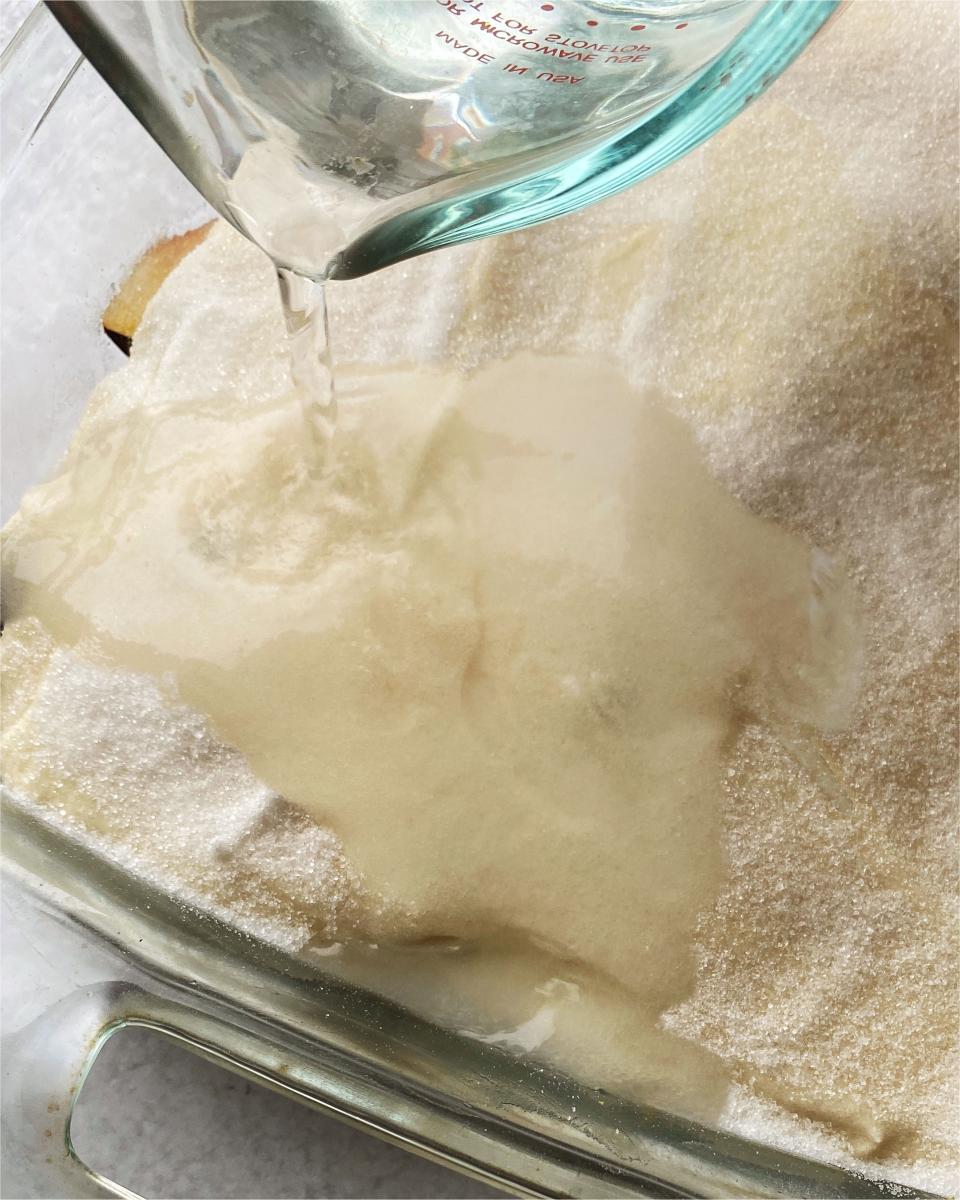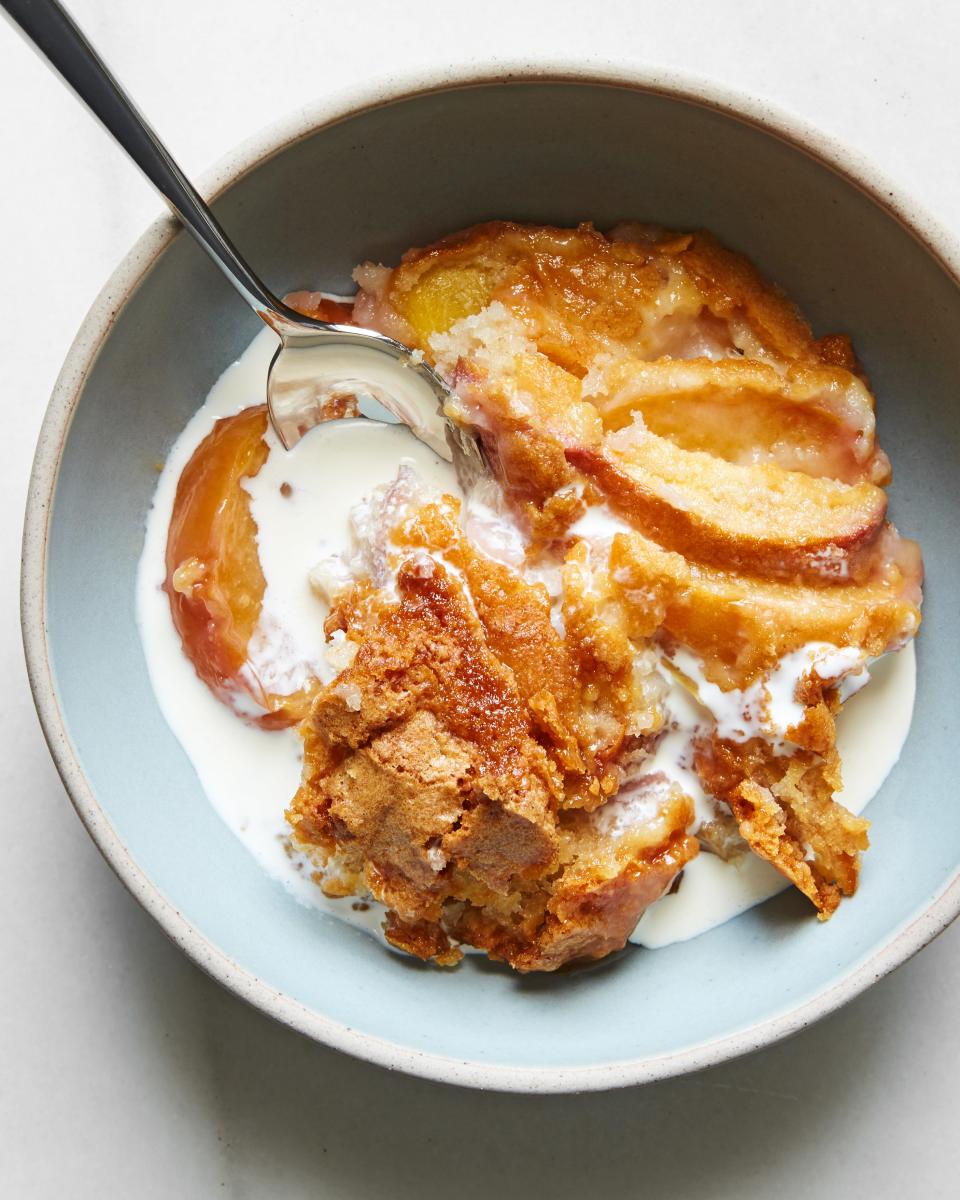This Peach Cobbler Has a Secret Ingredient: Hot Water
When it comes to baking at home, I have a type. Though I’m happy to eat any kind of treat if someone else is making it, in my own kitchen I prefer fruit-based desserts, and particularly those that work all year long. My favorite recipes are the ones that use whatever produce is in season; I’ve memorized a few, and swap out the fruit portion based on what looks good at the market. If you come over for dinner (in the future), chances are high we’ll end the evening with an upside-down cake that works just as well with berries as it does pears, an all-purpose crumble, or a galette, which allows me to neurotically arrange anything from figs to rhubarb in neat concentric circles.
Rising in the ranks in this category—as I make it each season and have yet to find a time it isn’t perfect—is the surprising and delightful hot water cobbler from Renee Erickson’s A Boat, A Whale, and A Walrus.
Erickson is a James Beard Award–winning chef based in Seattle, whose restaurants (including The Walrus & The Carpenter and The Whale Wins) are beloved for their nautical aesthetic and thoughtful, distinctive food—neighborhood spots that source local oysters and make you feel like family. Her cookbook brings the same vibes to the home kitchen; published in 2014, it’s a little French and a lot Pacific Northwest, divided into menus for celebrations like a fall pickling party and a relaxed Sunday brunch. Capping off the chapter dedicated to her own dream birthday meal is a simple recipe for peach cobbler, which deserves, if not a neon arrow pointing to it, at least a Post-It note for easy reference.

Hot Water Peach Cobbler - INEST
Erickson’s cobbler is great for a few reasons. It calls for dressing the fruit directly in the baking dish for one thing, which minimizes dirty bowls to clean, and is devoid of thickeners like cornstarch, which can muddy the peaches’ flavor. But the standout feature is the hot water crust. To make it, after spreading a layer of batter over your prepared fruit and coating it with a dusting of sugar, you pour ½ cup of hot water right over the top, soaking the cobbler from end to end.
Dumping water on a baked good sounds like a disaster, but in this case it’s the key to a texture I never thought I’d be able to create at home. The sugar and water bake into a crisp, shiny, crackly top layer, firm enough to smack a spoon against without breaking but that shatters easily when you plunge a utensil in—a bit like the torched lid of a crème brûlée. Beneath that is a layer of fluffy cake (“I love that it tastes like white cake batter,” Erickson says), and then the molten fruit. It’s an impressive and satisfying combination that requires no extra work on your part beyond a leap of watery faith.
The sugar and water bake into a crisp, shiny, crackly top layer—a bit like the torched lid of a crème brûlée.
According to Erickson, credit for the hot water cobbler technique goes to Susan Kaplan, the original owner of Erickson’s first restaurant, Boat Street Cafe. After learning the method from her predecessor, Erickson kept the dish on the menu for 17 years, until the cafe closed its doors in 2015. Now it’s a favorite of Erickson’s for events, and the recipe is one of the most loved from A Boat, A Whale, and A Walrus. “It’s different: not smushy or doughy like a biscuit cobbler,” she says by way of explanation. “It has the right ratio of fruit to topping. And of course that crunch!”
Best of all, the hot water cobbler technique works all year round. Any relatively sturdy fruit will cook up nicely in the base, from blackberries, cherries, or stone fruit in the summer to persimmons or apples in the fall. One Thanksgiving I made it with a mixture of pears, fresh cranberries, and a bit of ginger grated in with the lemon zest, which sealed the deal for me: This recipe earned a place among the other Old Reliables as a seasonal (in any season!) back-pocket dessert.
Some notes if you decide to make the cobbler at home—and to be clear, you absolutely must. Erickson mentions in the book that you should give the dish 30 minutes to cool before cutting into it to let the soft fruit firm up slightly (the penance you pay for not using thickeners); if I can speak from experience, I’d up that to 45, not that I didn’t eagerly spoon up all the juices that pooled at the bottom of my bowl.

Hot Water Peach Cobbler - INSET
The texture combination is best the day you make it, but the topping turns into the ideal crispy-gone-soggy bite as next-morning leftovers, which makes it extremely good with coffee or tea. And don’t forget the finishing touch: In lieu of vanilla ice cream as an accompaniment, Erickson recommends a drizzle of cold heavy cream. “If you’re going to serve the cobbler right from the pan, put the cream on the side and let people add it themselves,” she says. “I like it mixed with the fruit, to adjust the acidity and brightness, but not poured over the topping, to make sure it stays crisp.” After nailing the perfect crackly topping, it would be a shame to lose that crunch.
Peach Cobbler
Originally Appeared on Epicurious



